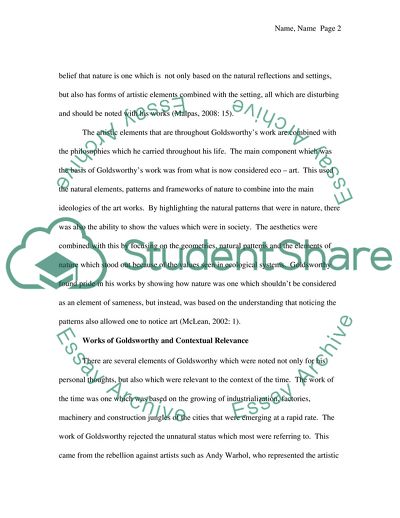Cite this document
(Andy Goldsworthy: Visual Culture Coursework Example | Topics and Well Written Essays - 1750 words - 1, n.d.)
Andy Goldsworthy: Visual Culture Coursework Example | Topics and Well Written Essays - 1750 words - 1. Retrieved from https://studentshare.org/visual-arts-film-studies/1751767-art-in-context-andy-goldsworthy
Andy Goldsworthy: Visual Culture Coursework Example | Topics and Well Written Essays - 1750 words - 1. Retrieved from https://studentshare.org/visual-arts-film-studies/1751767-art-in-context-andy-goldsworthy
(Andy Goldsworthy: Visual Culture Coursework Example | Topics and Well Written Essays - 1750 Words - 1)
Andy Goldsworthy: Visual Culture Coursework Example | Topics and Well Written Essays - 1750 Words - 1. https://studentshare.org/visual-arts-film-studies/1751767-art-in-context-andy-goldsworthy.
Andy Goldsworthy: Visual Culture Coursework Example | Topics and Well Written Essays - 1750 Words - 1. https://studentshare.org/visual-arts-film-studies/1751767-art-in-context-andy-goldsworthy.
“Andy Goldsworthy: Visual Culture Coursework Example | Topics and Well Written Essays - 1750 Words - 1”. https://studentshare.org/visual-arts-film-studies/1751767-art-in-context-andy-goldsworthy.


